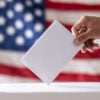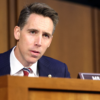
The Obama Administration’s original stimulus package includes $5 billion for a weatherization program (an early version of cash for caulkers). Perhaps because it involves spending huge sums of money, the Administration seems quite proud of the policy. Energy Secretary Steven Chu called it “one of our signature programs.” In this case, however, “signature program” appears to mean signing blank checks.
State Auditor Stephen Eells recently reported to law makers in New Jersey on the Garden State’s $119 million portion of this federal program. Though he only audited a $613,600 portion, he found that $32,700 were spent when “no services had been performed.” That’s over 5 percent of the funds spent on nothing. It’s hard to imagine any energy savings that that expenditure will deliver.
The Daily Signal depends on the support of readers like you. Donate now
In addition to this money-for-nothing category is the a-lot-of-money-for-not-very-much spending. For instance, the audit found federal stimulus money paid $27 for light bulbs priced elsewhere at $1.50 and paid $75 for $22 carbon monoxide detectors.
Money for nothing and overspending combined to 8.8 percent of total spending. Even more disturbing is that $69,000 (11.2 percent) of the audited spending couldn’t even be verified. Therefore, the total unverifiable spending plus overspending plus completely wasted spending equals 20 percent of the whole program. If this ratio holds for the whole plan, then the $5 billion program wastes $1 billion. That’s a lot of leakage.
Is New Jersey’s 20 percent figure is typical? We may never know, but the waste isn’t unique. Even worse problems were found in an audit of weatherization spending in Chicago, and Texas provides this example.
Whether it is a program to subsidize insulation and caulking, expensive appliance-efficiency mandates, or new regulations for trucks, the Obama Administration dismisses the costs by asserting, “This will save consumers money.” In doing so, the Administration ignores two fundamental economic principles: First, consumers already have the incentives in place to adopt efficiencies that save them money. Second, the government does not.





























